As we gear up for the Bathurst 1000 this month, we look back at a couple of classic V8 machines, as featured in the new book Australia’s Greatest Racecars, and their epic Mount Panorama winning moments… Here’s Mostert’s 2014 Bathurst-winning Ford FG Falcon
The 2014 Bathurst 1000 was an epic event that lasted almost eight hours, a record for the Great Race. Chaz Mostert took the lead on the final lap from a fuel-starved Jamie Whincup to deliver a maiden victory in the 1000 for himself and co-driver Paul Morris. It was the first lap which they had led all day, having started dead last due to being excluded from qualifying. The blue Falcon had also been in the wall in Morris’ hands when the track broke up mid-race at Griffin’s Bend, again falling down the order.
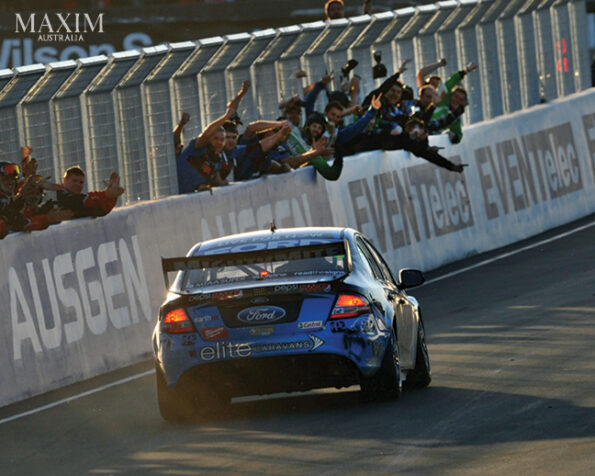
It was such a dramatic, come-from- behind win that the triumphant #6 Pepsi Max-sponsored Falcon deserves a spot in Australia’s Greatest Racecars on that basis alone. Yet, there’s another key reason this car earns a guernsey here. Nobody knew it at time, but it was the 14th and final victory for a Ford Falcon in the Bathurst classic, a run of success that began in 1967 with Fred Gibson and Harry Firth’s XR GT. Falcons would contest the big event until 2018 but never again greet the chequered flag first.
Ford Performance Racing’s #6 FG Falcon is one very special racing car. Its official designation is chassis ‘FPR 1216’. It was built in the first batch of Car of the Future chassis out of Campbellfield, Melbourne-based team for the 2013 season and has a rich history. It was raced that season as an FG Falcon by Will Davison, who finished a fine third in the drivers’ championship, the first of the Ford drivers. He scored a race win at Pukekohe in New Zealand and another in Townsville, before coming home seventh at Bathurst.

Mostert took over stewardship of FPR 1216 for 2014 when Davison moved to Erebus to drive the AMG Mercedes C63. Mostert experienced mixed fortunes in the early part of the season but had an upward swing results-wise mid-year, claiming a victory in Townsville. But no one could have predicted what the racing gods had in store for competitors at the biggest event of the year.
Bathurst was off the planet in terms of self-induced drama, intrigue and the unexpected, even by its lofty standards. School teachers talk of students being unsettled on windy days – something to do with negative ions in the air – and it was certainly breezy at times on Mount Panorama on Friday, so perhaps climatic conditions contributed to David Reynolds and Whincup both throwing their cars at the scenery. Whincup’s hit at The Cutting set the tone for an uncharacteristic manic weekend for the driver who had been near faultless for months.
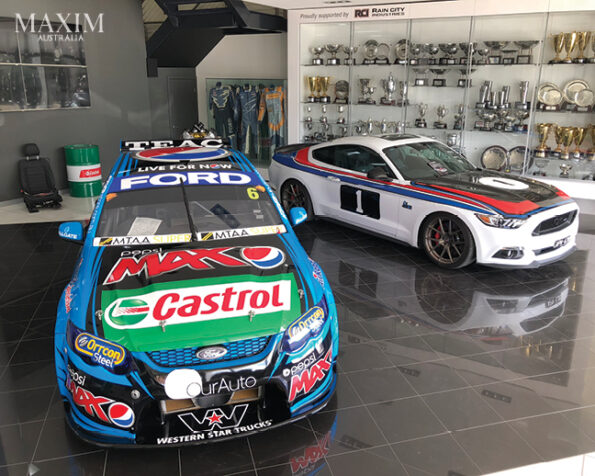
Meantime, Mostert did his best to skewer his chances when on the ragged edge – and arguably over it – during qualifying. He missed a spot in the Shootout with various mistakes when on his hot laps and was then sent rear of field for passing Russell Ingall when red flags were flying.
Saturday also saw its fair share of crazy moments, particularly when brake failure for Warren Luff at Griffin’s Bend pitched him into the back of an unsuspecting Craig Lowndes at high speed. Both Commodores were substantially damaged, and in the case of HRT’s #2 VF it proved to be terminal. Scratch one leading light from the contenders’ list. Actually, make that two, as #888 required an all-nighter and was unlikely to be as sweet for the race.
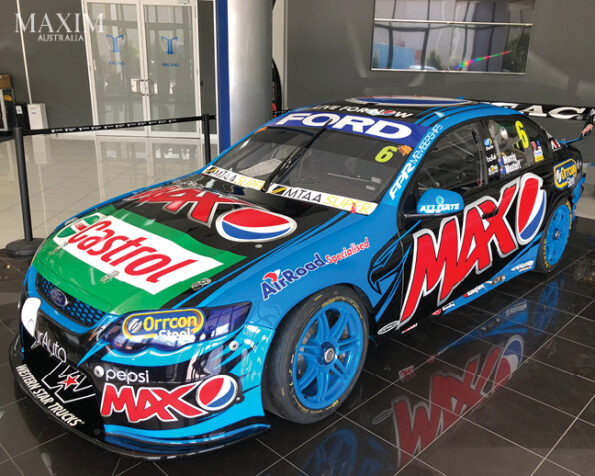
But all that mayhem was just for starters, as Sunday produced another epic day on the Mountain. First up, McLaughlin jumped pole-sitter Shane van Gisbergen off the start meaning a Volvo led the field across the Mountain on the lap. Then Whincup put in an incredible opening stint, moving from 23rd to be leading the race when he pitted, resetting the lap record by a whopping 0.7sec in the process.
Off-track excursions and wall scrapes and crunches were frequent occurrences. Morris buried #6 under one of Griffin’s Bend’s belted tyre bundles and was stuck fast. Soon after, the race was red flagged for just the third time in its history to enable repairs to track’s surface which was breaking up badly. Upon the restart – and subsequent restarts – more chaos ensured with Whincup taking out Todd Kelly with an unsafe re-entry after an off and six drivers crunched walls in separate incidents. Then Russell Ingall took Lee Holdsworth out at Griffin’s. There’d never been a race like it.
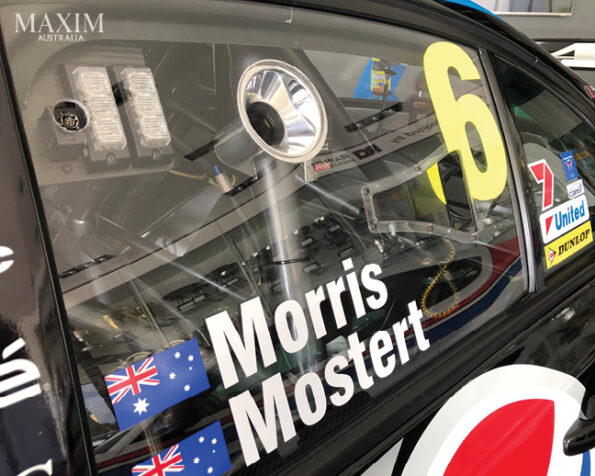
Through it all emerged van Gisbergen and Jono Webb as the combo most likely to take the win. Indeed, the Kiwi pitted for the final time from the lead of the race … only for the car’s starter-motor to fail after #97 was refuelled. Their chances were gone. That left those old foes, FPR and Red Bull Racing, at the front of the field with both their cars, until Lowndes sent Winterbottom spinning at Hell Corner, #888 given a drive-through penalty as a result.
Thus, we were down to a race in two, #1 leading #6 with Whincup marginal on fuel and his race engineer David Cauchi imploring him to save as much as possible. With 1.5 laps remaining Whincup was told he only had enough fuel for one lap. The situation was dire.
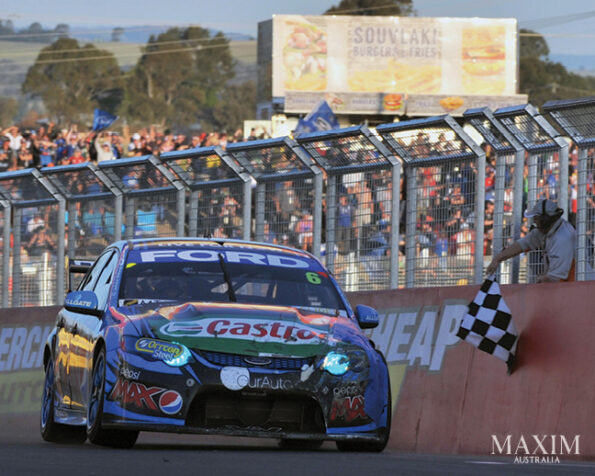
Sure enough, Whincup started to run dry heading down the hill for the final time and Mostert swooped at Forrest’s Elbow. The 22-year-old, paired with a 22-Great Race veteran, had triumphed after a most extraordinary – arguably the most extraordinary – day on the Mountain. They started last and their Falcon spent minutes stranded trapped under a tyre-barrier mid-race. Yet, they had never given up. Mostert ended the year seventh in the points standings.
For 2015, the Bathurst-winning chassis was run under the Super Black Racing banner for Kiwi ace Andre Heimgartner, who could only manage 24th in the championship. The car was then driven to the 2016 Dunlop Super2 Series title by Garry Jacobson in updated FGX trim. It carried #1 when he continued in the second tier in 2017. At Bathurst in 2018 the chassis performed a very different role, featuring on the telecast in the Supercheap Auto Racing livery of the day as the display car for the pit reporters’ technical pieces.
Tickford Racing then returned the car to its 2014 race-winning livery, restoring it to its pre-race condition. It was then displayed at its Campbellfield, Melbourne base. There are some who believe a Bathurst-winning car should be preserved in exactly the state it took the chequered flag – bugs, mud, crash damage and all. It’s a nice ideal, but an expensive proposition for teams who need their vehicles to keep racing. And God knows, #6 had plenty of scrapes that needed attending to. The car has since been sold to a private collector who no doubt cherishes the last of the Bathurst-winning Falcons. ■
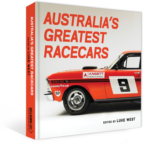
ABOUT THE AUTHOR
Luke West is a life-long motorsport tragic and Australian motoring historian who spent eight years as editor of Australian Muscle Car and a stint at Auto Action. He also dabbled in TV commentary and was a V8 Supercars on-course announcer for several seasons, including twice anchoring the Bathurst 1000 PA commentary team.
This is an edited extract from Australia’s Greatest Racecars by Luke West (Gelding Street Press $39.99) available at BIG W and all good bookstores
By LUKE WEST
For the full article grab the October 2024 issue of MAXIM Australia from newsagents and convenience locations. Subscribe here.




